From Snapping Civil Rights to Jazz Giants, Photographer Herb Snitzer Reflects on a 50-Year Career
The photograph, shot in an unguarded moment backstage at the 1990 Newport Jazz Festival, is equal parts mesmerizing and menacing. In a single frame, photographer Herb Snitzer manages to capture jazz giant Miles Davis, just months from death at age 65, in all of his volatility, complexity and genius.
“I knew the moment I took it, I had it,” remembers Snitzer. “I knew I had what I needed. Miles was answering a question and was just in his own world, being reflective and vulnerable. Miles was a nasty guy and I wanted to show this, not in a hysterical way but in a different kind of way. I’ve always said to my photography students, you don’t ‘take’ photographs. You create them.”
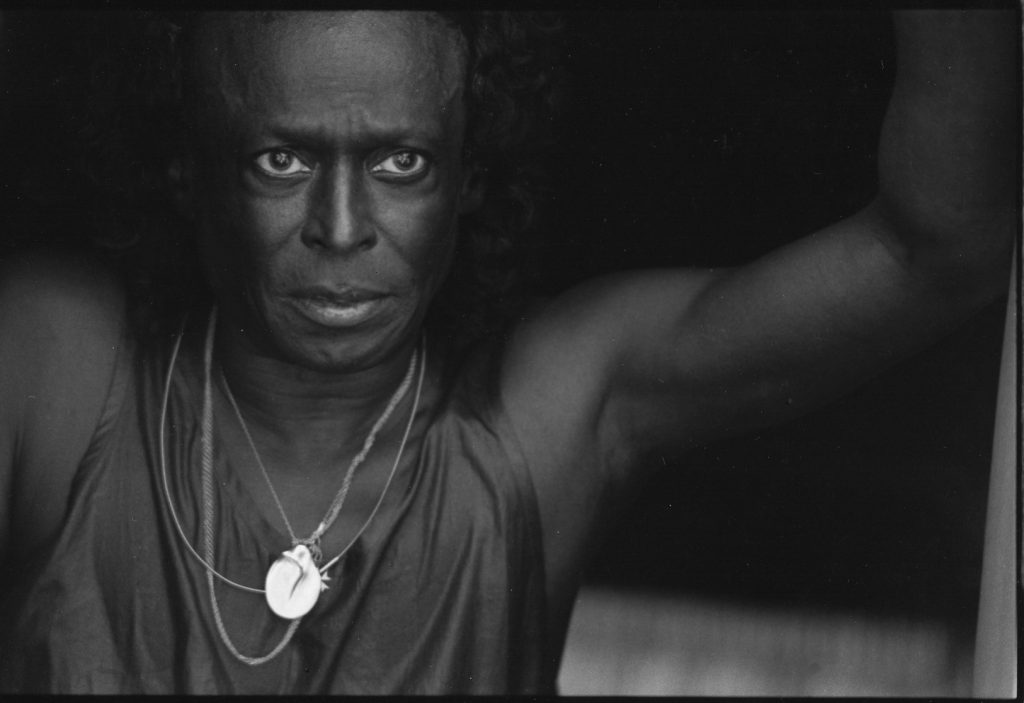
Blessedly for Atlantans, thanks to the Breman Museum’s new “A Jazz Memoir: Photography by Herb Snitzer” exhibition, we’re all now enrolled in Snitzer’s photography master class.
While the exhibition is physically hanging at the Breman, due to COVID-19, the museum remains closed for the time being. But the Breman has created a 360-degree digital tour of the photographs for jazz fans to peruse at their leisure and Snitzer himself will talk about his work Thursday morning, Oct. 1 at 11 AM for a one-hour free Zoom session with fans.
From 1957 to 1964 as photo editor for the music bible Metronome magazine, Snitzer, now 87, snapped some of the world’s biggest jazz artists, often in intimate club settings, bringing the viewer within a whiff of the cigarette smoke wafting through the air.
There’s Duke Ellington at Columbia Records studios in the wee small hours cutting a new arrangement with his big band, Louis Armstrong, blissed out with a joint on his tour bus on a hot summer’s afternoon and a playful, relaxed Nina Simone swinging her legs at a Philadelphia photo shoot for her 1959 album, “The Amazing Nina Simone.”
“With Nina, it came down to trust,” says Snitzer. “I loved Nina Simone and she knew that. She knew that I really cared for her. We were the same age. She lived in Philadelphia and I had gone to school there. We just hit it off. She was very mellow in those days. Her anger and her frustrations came out later. Early Nina Simone, when she was 25, 26? She was a sweetheart.”
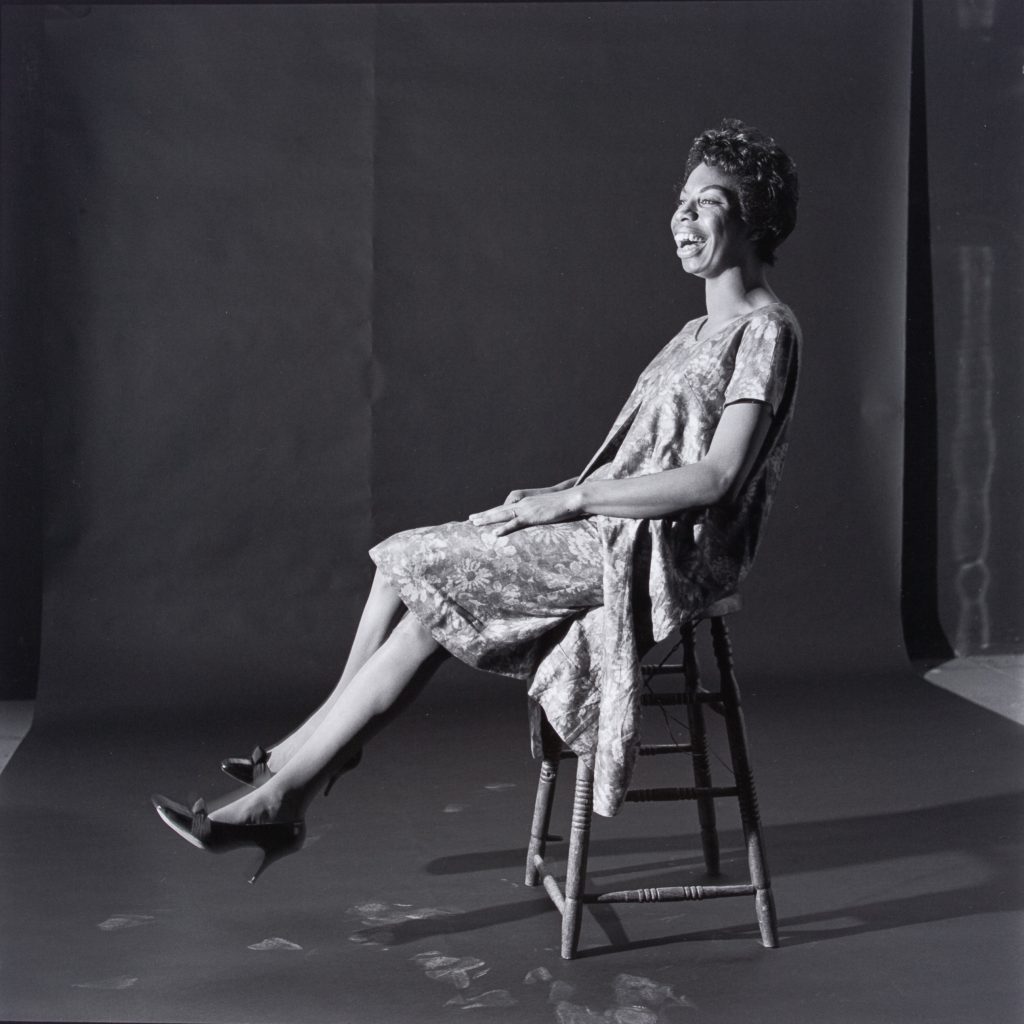
While the final album cover photo selection is a more posed image of Simone singing, Snitzer prefers the more carefree Nina that emerged between snaps of the camera shutter.
“I didn’t know I had that shot until later when I was in the darkroom,” says Snitzer. “So much of it was intuition on my part. Art is still a mystery and creativity is something I’ve been blessed with.” Laughing, Snitzer adds, “I have no reason to understand why I should have it!”
Snitzer says one secret to the intimacy he’s been able to achieve with his work comes down to his stature and demeanor. “I’m a little guy so I don’t threaten anybody,” he explains. “It was easy for me to get around the musicians, especially if they knew you were part and parcel of their world. I began to be known by many of the musicians because I was in it for such a long time. They grew to trust this little white guy. They knew he wasn’t going to do anything to jeopardize their careers.”
Of course, the musicians didn’t always make it easy for the guy documenting jazz history. At a United Nations concert in 1960, jazz pianist Thelonious Monk took to the stage without ever removing his stylish shades. Elbow to elbow with another photographer on the other side of the piano, on the fly, Snitzer discovered a work-around. He explains: “Part of being an artist is seeing what can be done in any situation you’re in. I try and figure out what opportunities exist.”
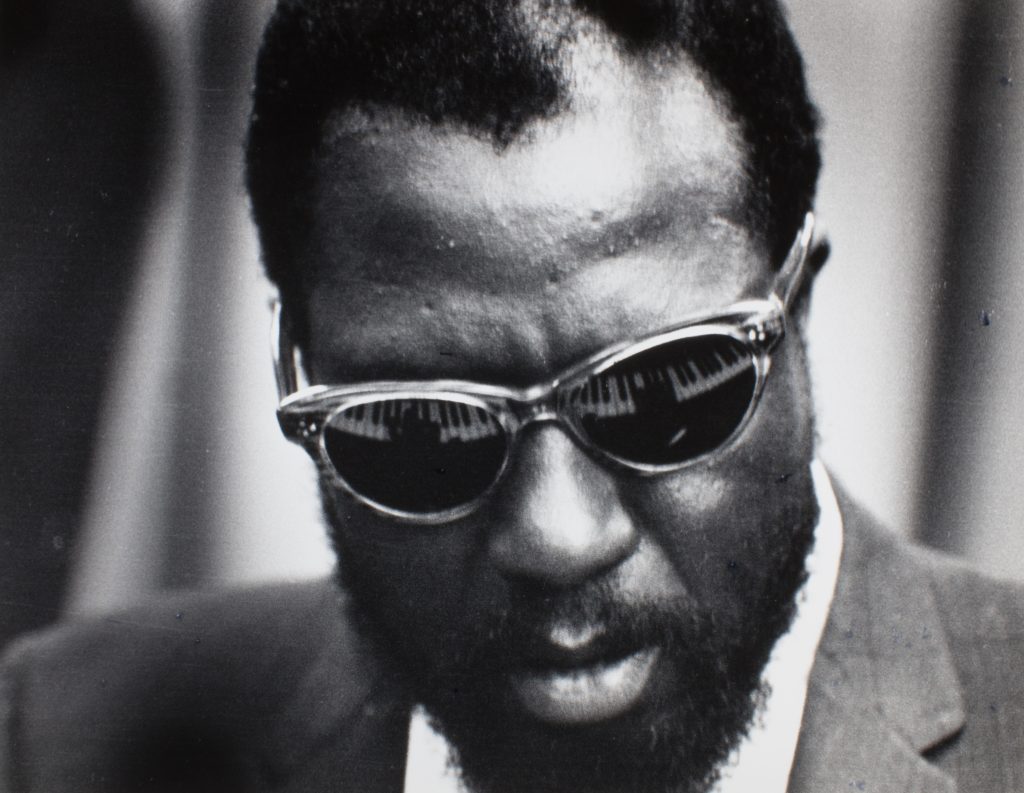
Snitzer’s resulting photograph with Monk’s hands and the keyboard reflecting off the lenses of the musician’s sunglasses has become so iconic it serves as the cover image of his 2011 coffee table photo collection, “Glorious Days and Nights: A Jazz Memoir.” Backstage, Snitzer recalls Monk challenged him to a game of ping-pong. “After the third game I said, ‘OK Monk, you win.’ He was really good. He wouldn’t let me win either! He was a wonderful man.”
The final section of the Snitzer retrospective at the Breman, titled “Human Rights,” serves as a sad but timely coda to the rest of the exhibition. Between sets inside smoky jazz clubs chronicling some of the world’s finest musicians, Snitzer also trained his lenses on the civil rights movement.
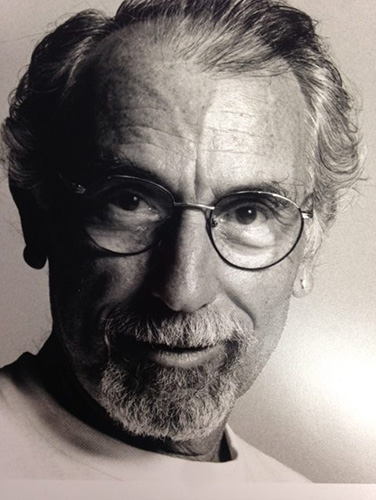
“I involved myself in the world of Malcolm X and the Black Panthers and the others because this became very important to me on a personal level,” he says. “Racial and social justice was important to me, perhaps because my parents were Jewish immigrants to this country. Exposing injustice with my camera has always been very important to me. I’m still photographing. It doesn’t become easy anymore, but I still do it. We live in very strange times right now and how it will all work out is still in the future.”
Thankfully, Herb Snitzer keeps his camera charged and remains ready to document the world for us.
Jazz photographer Herb Snitzer will discuss his half-century career and the images in his new Breman Museum “A Jazz Memoir: Photography by Herb Snitzer” exhibition, Thursday, Oct. 1, 2020 at 11 AM on Zoom. Click here to register.
On October 15 at 7 PM, the Breman will host the conversation “Jews and Jazz: A Discussion of the Impact of Jews on the Jazz Scene” with Gary Motley and Dr. Gordon Vernick. Click here for more details.
To view the Snitzer exhibition online, go to thebremen.org.

Richard L. Eldredge is the founder and editor in chief of Eldredge ATL. As a reporter for the Atlanta Journal-Constitution and Atlanta magazine, he has covered Atlanta since 1990.

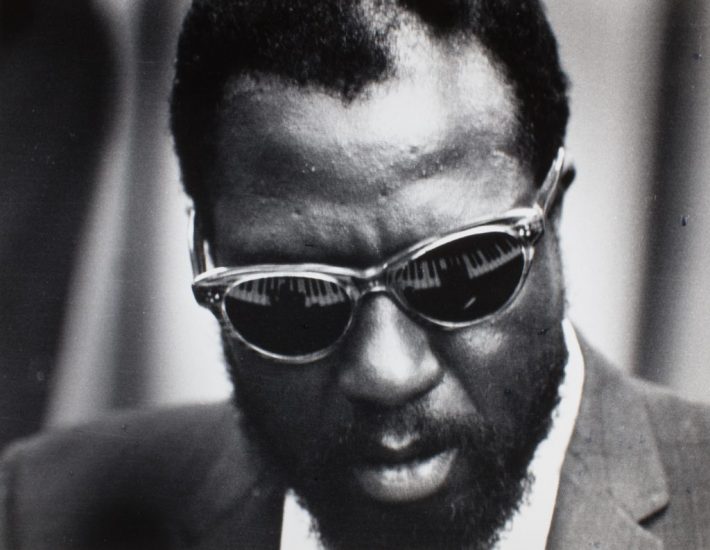



S Byrd
November 14, 2020 @ 3:27 am
I was moved by your article your article ‘Trump Tore My Family Apart’….I have often been concerned about the cult-like manner of influence he has had over so many which has led to me praying more for my country than I had. I will pray the wool be removed from your family’s eyes
and all will be restored better than before Trump’s influence. May you be at peace as I know you have already extended an olive branch by expressing your love for them. I will stand with you for restoration. In the meantime, know that there are people praying for you and your family be in peace! In Jesus Name!
FYI! I’ve never been prompted to look up a writer to see how I could reach out. You are an awesome writer. Thanks for sharing your talent. I did take the liberty of reading other articles you have written.